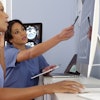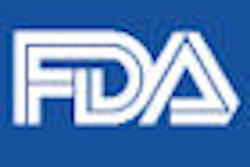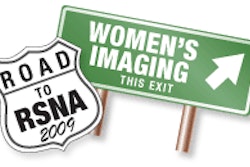Waiting for change from the U.S. Food and Drug Administration (FDA) often requires the patience of Job. Vendors of full-field digital mammography (FFDM) and computer-aided detection (CAD) products are learning this firsthand, as the agency slowly moves toward easing its regulatory approval process for the technologies.
The FDA's Radiological Devices Panel of the Medical Devices Advisory Committee held a meeting last week as the latest step in a review process that initially began in 2006, when the agency said it was considering relaxing the requirements for FFDM products by reclassifying them from class III devices to class II. At the meeting, the panel hinted that it might have final rules ready a year from now -- a date that many industry watchers believe is unreasonable for a review process now entering its fourth year.
During the two-day meeting on November 17 and 18, the panel clarified a few points of a May 2008 draft guidance on FFDM regulation and also tackled the issue of reclassifying CAD systems, for which a draft guidance was issued in October.
While some industry representatives have been frustrated at the agency's slow pace, some feel the fact that the panel meeting was held at all is a good sign.
"[Last week's] meetings were a very positive step in the process of clarifying the regulatory requirements for FFDM and CAD. FDA should be congratulated for holding this meeting," said Stephen Vastagh, director of international and industry programs at the Medical Imaging and Technology Alliance (MITA) in Arlington, VA.
Industry to FDA: Make FFDM clearance less burdensome
The Radiological Devices Panel consists of radiologists, medical physicists, biostatisticians, and other experts who provide advice and guidance to the FDA. Although they can help guide FDA policy, their suggestions are not binding for the agency.
At the meeting, the panel heard from mammography developers as well as academic researchers who lobbied for a less burdensome process to obtain clearance for FFDM devices, according to an FDA summary of the meeting.
"The regulatory requirements for FFDM device clearance have been excessive," said Vastagh. "The message the panel received was that the requirements should be commensurate with the amount of changes that are made in new products under the 510(k) process."
Although originally novel technologies, both FFDM and CAD have become well-established and are part of the routine standard of breast care. The first FFDM system was approved in 2000, and the FDA in May said that FFDM units make up more than 50% of the installed base of mammography systems.
Likewise, the first commercial CAD application was approved in 1998 for breast imaging -- since then, the technology has blossomed into dozens of new clinical applications.
A key issue with the current regulatory pathway for FFDM is the burden of showing the technology's equivalency to analog mammography via clinical trials, as required by the premarket approval (PMA) process, according to Dr. Etta Pisano of the University of North Carolina at Chapel Hill School of Medicine and lead investigator for the Digital Mammographic Imaging Screening Trial (DMIST). Pisano spoke at the panel meeting.
"We know how digital performs relative to film-screen," she told AuntMinnie.com. "We've already double-exposed over 50,000 women for the DMIST trial, and we don't need to do that anymore. It's unethical for FDA to require double exposure of women when we already have so much data on digital mammography. There's just no reason for companies to have to present that same kind of extensive clinical data when DMIST used the same machines."
Specific concerns voiced by the panel about digital mammography were focused on its use as a diagnostic tool. The panel emphasized that because diagnostic mammography includes additional views compared to screening mammography, it should require additional evaluation in a 510(k) process.
But the panel recommended that the FDA take a graduated approach to premarket requirements, noting that DMIST has shown that FFDM is as effective as film-screen mammography and has comparable radiation dose, and that the physical characteristics of the current FFDM devices on the market are well understood, according to the statement.
"The panel advised that for new submissions having comparable technological characteristics when compared to the predicate device, physical laboratory testing with small samples of clinical images is sufficient to show substantial evidence," the FDA wrote.
Is this forward movement? Some attendees weren't sure.
"At the end of the day, the FDA affirmed the same concept [as it did in the 2008 draft guidance]: 'Yes, we want to make FFDM class II instead of class III,' " said James Culley, Ph.D., director of marketing for women's imaging vendor Hologic of Bedford, MA. "The question [the agency still has] is whether to have special requirements for diagnostic FFDM versus screening."
When will the final guidance be published? At the meeting the FDA mentioned fall 2010, according to Vastagh.
"Issuing the final guidance next fall is way too far out," he said. "There isn't anything else to do except take the comments from this meeting and rewrite the documents. The agency isn't starting with a blank page. We hope that by the fourth anniversary of the first hearing [on this issue], in May of next year, the final guidance will be posted."
Four companies sell FFDM units in the U.S. and 12 companies sell units in Europe and elsewhere, Vastagh said. After this much delay, it would be shameful to further hold up the products already in the pipeline.
"This horse is beaten to death," Vastagh said.
Concerns about CAD
After the discussion of FFDM, the panel shifted its direction to discuss its regulation of computer-aided detection technology, according to Julian Marshall, director of R2 product management and principal engineer at Hologic.
"At prior meetings on CAD, there was a lot of emphasis on vendors doing clinical testing," Marshall said. "This time the panel came out in favor of correctly done standalone testing. This is a distinct improvement because in the previous guidance document, the FDA put in a requirement that test datasets could be used only once, meaning that every time a vendor wanted to test the equipment again, it would have to put together another database."
CAD's regulatory process is in a similar place as FFDM was in May 2008, Vastagh said.
"We are hopeful that there will be a similar discussion for CAD about clinical studies being commensurate with the risk level of the device," he said.
By Kate Madden Yee
AuntMinnie.com staff writer
November 23, 2009
Related Reading
Mammography market awaits new FDA rules on FFDM regulation, October 13, 2009
FDA: FFDM installs cross 50% threshold, May 11, 2009
FFDM equals analog mammography in hard-copy reading, May 7, 2009
Digital mammography transition: The agony and the ecstasy, May 5, 2009
Mammography procedure volume drops 16% since 2000, March 17, 2009
Copyright © 2009 AuntMinnie.com




















